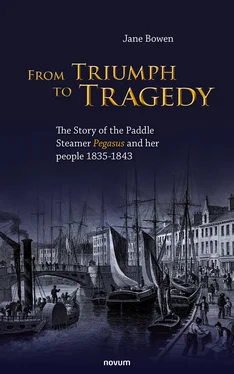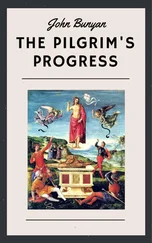I first became aware of the ship and its sinking off Holy Island in the 1990s, when a couple of people visited the Berwick Record Office looking for information. I knew the name of the ship but not the story behind it and could only provide access to the local newspaper, Berwick Advertiser. Over the years, I have picked up more bits of information-entries in the Bamburgh and Holy Island burial registers; the badly worn gravestone dedicated to Field Flowers in Holy Island Churchyard and the programme on comedian, Sarah Millican in ‘Who Do You Think You Are’, where it was revealed that one of her ancestors had worked on the wreck as a diver. However, these were only bits and pieces, only part of the story.
When Jane asked me to read her book, I was very keen to do this as I wanted to know what she had found out. As Jane is an avid and meticulous researcher, I knew she would leave no nook or cranny unturned in her quest for information. The book hasn’t disappointed and I have been amazed about what is revealed not only about the boat, the company who ran it and its sad fate on what was really a clear night but in very dangerous waters. However, this is only half the picture, as what really brings this book to life is the previously untold stories of those on board, most of whom were lost and many whose bodies were never recovered. I was fascinated to read about their diverse backgrounds and this book is really a testament and legacy for them and what local and family history is all about – ordinary people and places and how their lives become intertwined with events which shaped the future of shipping.
Who would have thought that a chance discovery of some information in an archive would lead to such detailed and varied research on a little-known disaster off the Northumberland coast, which deserves to be properly recorded and remembered, a fitting memorial to those involved with it.
Linda Bankier, Berwick Archivist
Preface
My interest in the Pegasus began when I found, in the Northumberland Archives, a collection of proofs of ‘Reward’ notices, looking for information about passengers lost following the sinking of the Pegasus in July 1843. The number of different notices suggested a serious disaster, but I had never heard of it. I was curious.
A Google search produced accounts of the disaster, in its day the worst merchant marine disaster in British waters. In the search, I also found that the company records were held in the Glasgow University Archives. From the information there, and in the British Newspaper Archives, a much fuller picture of the ship and its activities began to emerge.
Built in 1835, specifically for the Leith/Hull route, at the time the Pegasus was at the cutting edge of ship design – and a forerunner of John Masefield’s ‘Dirty British coaster’. In the years that followed, the weekly passenger and goods service she provided was a key link in the industrialisation of Scotland before railway communication was fully established. In each country, she created markets for goods produced by other countries. At a time when political revolutions were still current in Europe, the service contributed to the security of the United Kingdom as a whole, allowing troops to be moved efficiently to garrisons across the country. The Pegasus also had a hand in the entertainments industry of the day. Racehorses, theatre companies and menageries all sailed on her, making travelling shows accessible to a much wider audience.
Her unexpected wreck, on a clear summer’s night in 1843, shocked the nation, and left grieving families across Britain, from Inverness to London, and Wales to Lincolnshire. Even then, she was at the forefront of salvage activity, with some of the first deep sea helmeted divers working on her to retrieve bodies and goods. From the disaster, and the enquiries which followed, came the beginnings of better shipping regulation.
This is the story I have tried to tell – I hope you will find it as fascinating as I have.
Acknowledgements
This book would not have been possible without the help, encouragement and advice of those who generously shared their own work and research with me. Particular thanks are due to:
Judith Fawcett Armstrong; Linda Bankier (Berwick-upon-Tweed Record Office), Ann Bevan (The Historical Diving Society), John Bevan (Holy Island), Michael Finchen (The Quartermaster’s Store), Alexander Findlater, the late Ron French, Norman Frisby and Graham Knox (St. Chad’s Church, Rochdale), Jill Groves, Louise Harrison (London Metropolitan Archives), Kathryn Jones (Lincolnshire Archives), Eva La Pensée, Ervine Long, Bill Longbone, June Slee, Philip Somervail, Wendy and Alan Urwin, and Lisa Waters (Bamburgh Castle Archives).
List of Illustrations and Maps
Illustrations
Paddle Steamer, believed to be the Pegasus, from A Narrative of the Life of Charles Bailey. frontispiece
A slip dock on the River Clyde 1827; University of Glasgow Library, Archives & Special Collections. 16
Barclay and Curle’s Slip Dock, 1845 by William Simpson; © Glasgow Museums. 23
Pegasus flier 1840; © National Museums Scotland. 50
Van Amburgh and the Lions; engraving after Landseer’s painting; Author’s copy. 54
Manor House Street Station, Hull; Hull Packet 3 July 1840. 59
Advertisement promoting onward travel in Scotland; Sheffield Independent, 16 January 1841. 64
Advertisement promoting onward travel to London and the Eastern and Midland Counties of England; Fife Herald 29 April 1841. 64
Bill of Coals April 1842; by permission of University of Glasgow Library, Archives & Special Collections, Leith Hull & Hamburg Steam Packet Co Ltd Collection, GB248 UGD255/4/35/1. 65
The Launch of the Steam Ship Forth; (detail) ©National Maritime Museum, Greenwich, London. 71
Advertisement for Reduced rail fares for Steam Packet Passengers from Leith to Hull; Fife Herald 14 July 1842. 79
Watson’s Signal Code from the Handbook of Communication by Telegraph 1842. 93
Leith Signal Station, 1829 print by Thomas Shepherd; Author’s copy. 99
Bailey & Hildyard’s Letter of Thanks; The Scotsman 26 July 1843. 118
Reward Poster for James Richard Elliott; Northumberland Archives. 128
Notice of Trinity House Wreck Buoy; Shipping and Mercantile Gazette 5 August 1843. 130
The Goldstone Buoy today; photograph courtesy of John Bevan, Holy Island. 130
Deane Divers Helmet; photograph courtesy of John & Ann Bevan. 132
John Morrell MacKenzie’s Gravestone at Bamburgh; photograph courtesy of Janet Ward. 135
The Early Divers at Work; from Submarine Researches, by Charles Deane, 1836; image courtesy of John & Ann Bevan. 141
Sketch of Charles Bailey; from A Narrative of the Life of Charles Bailey. 183
The Barton Family Gravestone, Market Rasen; photograph courtesy of Janet Ward. 186
Reward Poster for Sarah Briggs; Northumberland Archives. 187
Mungo Easson’s Gravestone, Holy Island; photograph courtesy of Janet Ward. 190
Reward Poster for Mrs Edington; Northumberland Archives. 191
James Elliott’s eroded Gravestone, Holy Island; photograph courtesy of Janet Ward. 193
James and William Elliot’s Memorial Plaque, St. Chad’s Church, Rochdale, photograph courtesy of Graham Knox and Norman Frisby. 193
Engraving of Edward William Elton; Illustrated London News 5 August 1843. 195
Reward Poster for Field and Fanny Flowers; Northumberland Archives. 196
The Flowers’ Gravestone, Holy Island, from an early postcard of Lindisfarne Priory. 197
Maps
The area covered by the Pegasus on her voyages. 14
Alternative sailing routes along the north Northumberland coast. 31
Sketch of Leith Harbour based on 1842 Admiralty Chart. 68
River Humber and Hull Docks; Greenwood’s Picture of Hull, 1835. 73
Читать дальше












